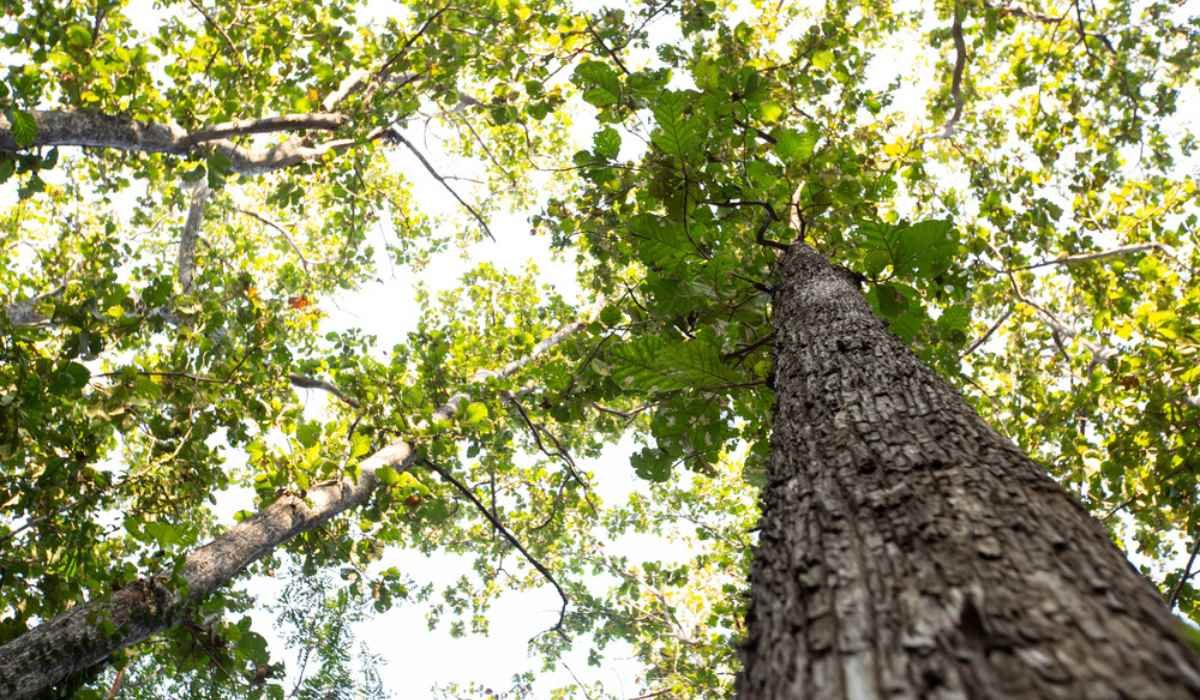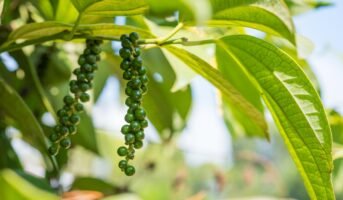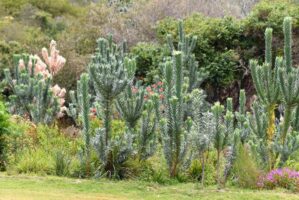The Chinar tree (Platanus Orientalis) is a species of plane tree native to the eastern Mediterranean region and western Asia. It is a deciduous tree that grows up to 50-metre (160-foot) tall, and has a wide, spreading canopy. They are also long-lived, with some specimens living for over 200 years. The bark of the Chinar tree is smooth and pale grey. It is known for its large, bright green leaves and stunning autumn colour, with the leaves turning shades of orange, yellow, and red in the fall.
The tree produces clusters of small, greenish flowers that give way to round, green fruit that turns brown when ripe. Chinar trees are known for their resistance to drought and extreme temperatures and are often planted as ornamental trees in gardens and parks. They are also used as shade trees along streets and other public spaces. In some parts of the world, the Chinar tree is considered a symbol of peace and prosperity

Source: Pinterest
Chinar tree: Key facts
| Name | Platanus orientalis |
| Common names | Oriental Plane (English); Chinar (Hindi); Buin (Kashmir) |
| Family | Platanaceae |
| Origin | Eastern Mediterranean region and western Asia |
| Soil | Rich, moist, fertile, and well-drained soil |
| Temperature | Warm summers and cold winters |
| Sunlight | Full sunlight |
| Flowers | Clusters of small, greenish flowers |
| Leaves | Bright green leaves, palmately 5 – 7-lobed, 12 – 20 cm long |
| Indoor/Outdoor | Outdoor |
Chinar tree: Varieties and physical description
Chinar trees are popular ornamental plants often used in landscaping and public parks. There are several varieties of the Chinar tree, including:
-
Morton Circle
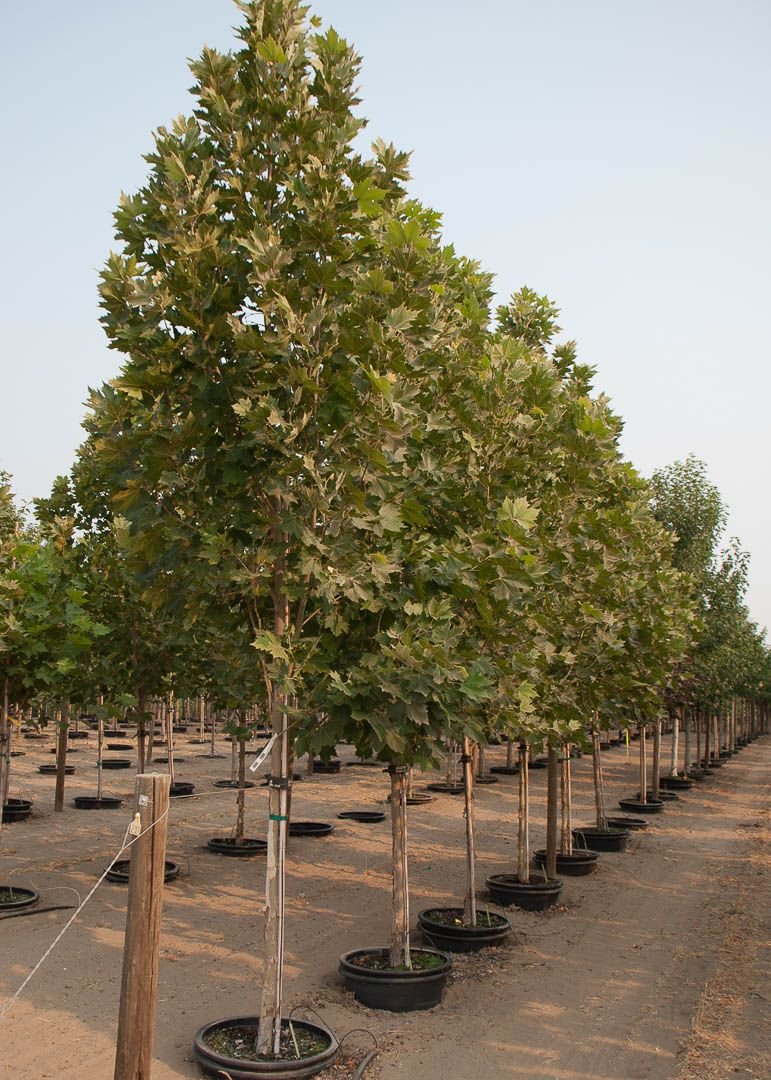
Source: Pinterest
This variety is known for its large, rounded canopy and is popular in urban landscapes.
-
Bloodgood

Source: Pinterest
This variety has dark red leaves and is prized for its ornamental value.
-
Emerald Queen
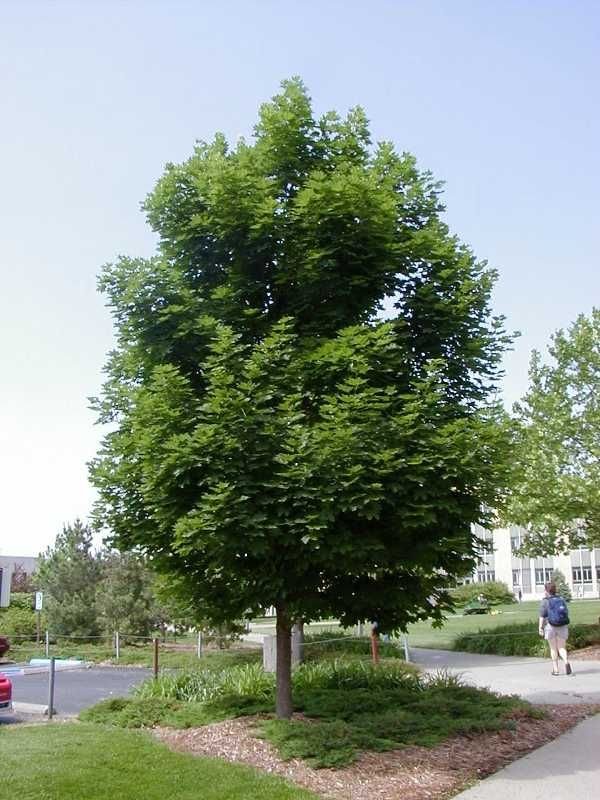
Source: Pinterest
This variety is known for its fast growth rate and deep green foliage.
-
Liberty
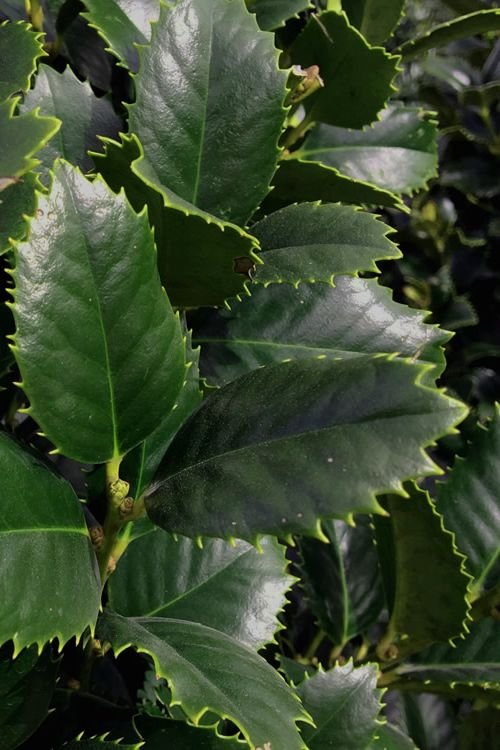
Source: Pinterest
This variety is known for its resistance to pests and diseases and is often used in commercial landscaping.
-
Majestic Beauty
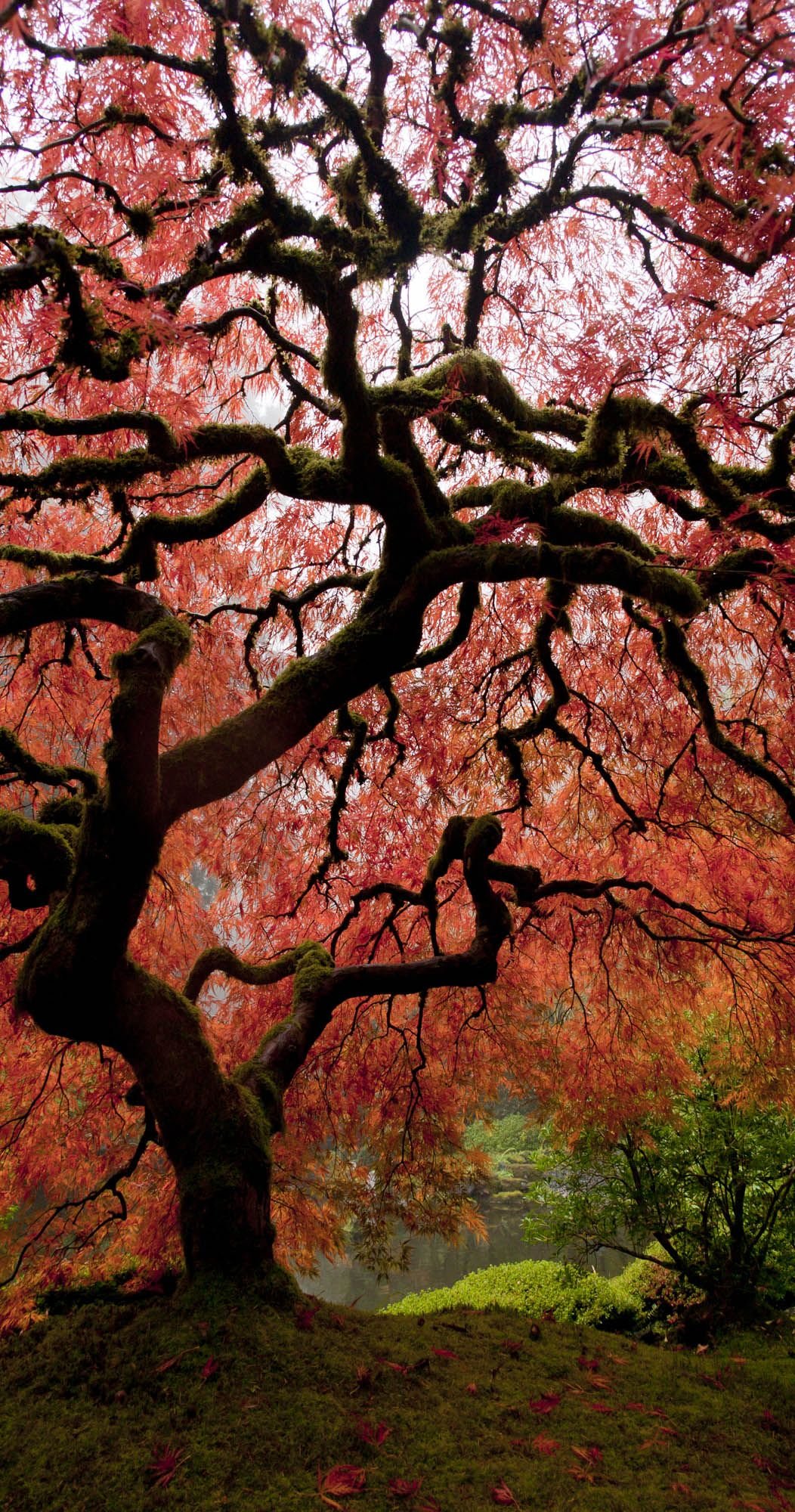
Source: Pinterest
This variety has a pyramidal shape and is known for its large size and attractive foliage.
Autumn Chinar
The leaves of the Chinar tree, with deep green shade in summer, turn to vivid orange and red during autumn. The Autumn Chinar makes for a breathtaking sight in Kashmir during this autumn season.
Kashmiri icon
The Chinar tree has great significance in Kashmiri culture and represents Kashmir’s natural heritage. The tree is often depicted in different forms of art, poetry, and literature. Besides its natural beauty, the Chinar tree also provides shade to locals..
The changing colours of Chinar leaves marks the arrival of the autumn/ fall season, which is known as Harud in Kashmir.
Iconic foliage
One of the unique characteristics of the Chinar tree is its ability to change its leaves’ colors. During the autumn season, the leaves turn into attractive red, amber, and yellow colour. During the fall, one can witness the spectacular scenery of the ground completely covered with Chinar leaves as they crackle under the feet while walking.
Giant canopy
The mature Chinar trees can span around 30 metres in diameter, which helps provide ample shade during summers. The broad shape of Chinar leaves forms a unique palm-like pattern, which makes it look like a giant canopy.
Regal beauty
The Chinar tree is mainly grown for ornamental purposes to decorate gardens and parks. With its eye-catching leaves, the tree brings a royal appeal to any outdoor space.
Chinar tree: How to grow?
The Chinar tree, also known as the Chinese Banyan or the Platanus orientalis, is deciduous. It is known for its distinctive, fan-shaped leaves and beautiful, exfoliating bark.
To grow a Chinar tree, follow these steps:
- Planting: Chinar trees prefer well-drained, moist soil and full sun to partial shade. When planting a Chinar tree, choose a location with these conditions and dig a hole twice as wide and deep as the tree’s root ball.
- Watering: Chinar trees need regular watering to stay healthy. It is advised to water the tree once or twice a week, depending on the weather and soil conditions. Refrain overwatering to prevent root rot.
- Fertilising: Chinar trees benefit from regular fertilisation. Use a balanced fertiliser (such as a 10-10-10 or 20-20-20 formula) in the spring and again in the summer. Avoid fertilising in the fall, as this can stimulate new growth that may not have time to harden off before winter.
- Pruning: Chinar trees do not require heavy pruning, but you may need to remove any dead or damaged branches as needed. When it is still dormant, it is best to prune the tree in the late winter or early spring.
- Pests and diseases: Chinar trees are generally resistant to pests and diseases, but they can occasionally be affected by aphids, scale, and leafhoppers. If you notice any of these pests on your tree, you can use insecticidal soap or horticultural oil to control them.
Chinar tree: Care tips
The Chinar tree is known for its beautiful, deeply lobed leaves that turn bright red or orange in the fall. Here are some tips for caring for a Chinar tree:
- Plant your Chinar tree in well-draining soil in a location that gets plenty of sunlight.
- Water your Chinar tree regularly, especially during dry periods. It’s important to keep the soil moist but not soggy.
- Fertilise your Chinar tree in the spring with a balanced, slow-release fertiliser.
- Mulch around the tree’s base to help retain moisture and suppress weeds.
- Prune your Chinar tree in the late winter or early spring to remove any dead or damaged branches.
- Protect your Chinar tree from extreme cold by wrapping the trunk with burlap or using a tree wrap.
- Monitor your Chinar tree for signs of pests or diseases, such as aphids, mites, and leaf spots. If you notice any problems, treat them promptly to prevent further damage to your tree.
These care tips can help your Chinar tree thrive and enjoy its beautiful autumn foliage for years.
Chinar tree: Benefits
Chinar trees are valuable and beneficial to any landscape or community, providing various environmental, aesthetic, cultural, and medicinal benefits. It is known for its distinctive, large, umbrella-shaped canopy and deeply furrowed bark.
There are several benefits to planting and nurturing chinar trees:
- Environmental benefits: Chinar trees can help to improve air quality by absorbing carbon dioxide and releasing oxygen. They also provide shade and shelter for wildlife and can help to prevent soil erosion by stabilising the ground with their deep roots. Like other trees, the Chinar tree helps to reduce air pollution by absorbing carbon dioxide and other pollutants from the air.
- Aesthetic value: The Chinar tree has attractive, five-lobed leaves that turn red, orange, or yellow in the fall, making it a popular landscape choice. It also has beautiful, small flowers that appear in the spring.
- Historical and cultural significance: Chinar trees have a long history and cultural significance in the Kashmir Valley, where they have been a regional symbol for centuries. They are often planted in public spaces, such as parks and gardens, and are considered a symbol of pride and cultural heritage.
- Medicinal properties: The leaves and bark of the chinar tree have been used in traditional medicine for centuries to treat a variety of ailments, including skin conditions, respiratory problems, and digestive issues.
- Habitat: The Chinar tree provides a habitat for various wildlife, including birds and small mammals.
Chinar tree: Toxicity
The Chinar tree is not considered toxic to humans or animals. It is generally safe to plant and handle, and there are no known adverse effects associated with its use. However, washing your hands after handling any plant is always a good idea, as some people may be allergic to certain plant species. Also, it is always a good idea to be cautious and keep an eye on children and pets around unfamiliar plants.
FAQs
How big do Chinar trees grow?
Chinar trees can grow quite large, reaching heights of up to 100 feet (30 metres) and spreading to 50 feet (15 metres). They are fast-growing trees and can get their full size in just a few decades.
What is the lifespan of a Chinar tree?
The lifespan of a Chinar tree can vary, but they are generally long-lived trees. Some individual trees have been known to live for hundreds of years.
What is the best climate for a Chinar tree?
Chinar trees prefer a cool, humid climate with plenty of rain. They are tolerant of a wide range of soil types but prefer well-draining soil rich in organic matter. They do not tolerate extreme heat or drought well.
What is the cultural significance of the Chinar tree?
The Chinar tree has a long history of cultural significance in the Himalayan region, where it has been prized for its ornamental value and medicinal properties. In Kashmir, the Chinar tree is considered a symbol of the region's identity and is often depicted in local art and literature.
| Got any questions or point of view on our article? We would love to hear from you. Write to our Editor-in-Chief Jhumur Ghosh at [email protected] |
Housing News Desk is the news desk of leading online real estate portal, Housing.com. Housing News Desk focuses on a variety of topics such as real estate laws, taxes, current news, property trends, home loans, rentals, décor, green homes, home improvement, etc. The main objective of the news desk, is to cover the real estate sector from the perspective of providing information that is useful to the end-user.
Facebook: https://www.facebook.com/housing.com/
Twitter: https://twitter.com/Housing
Email: [email protected]
